
10 Tips on How to Keep Your Manufacturing Company Running During the COVID-19 Pandemic through Social Distancing
In a survey conducted by the National Association of Manufacturers between February 28 to March 9, 2020, 78.3% of the 558 respondents anticipate a financial impact, 53.1% anticipate a change in operations, and 35.5% face supply chain disruptions.
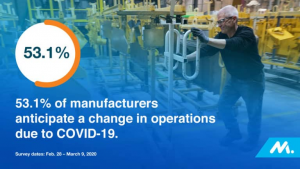
Unfortunately, most manufacturing companies have jobs that cannot be done remotely by the workers. So, while law offices, tech companies, schools, and even banks shut their doors and require employees to work remotely, manufacturers are faced with the reality that they need to work on-site.
Factory production work cannot be done from home!
But with the COVID-19 pandemic still wreaking havoc globally and emphasizing social distancing and self-quarantine, factory workers face a very tough challenge.
According to the executive director of ARMA, Ed Latson, “Central Tenax manufacturers are facing significant risk due to COVID-19.”
How can your workers continue production during this pandemic?
What are the best practices of social distancing that can work in your facility?
With this article, we hope to answer these questions, and many more you may have under the following headings:
- The issues faced by manufacturing industries and possible solutions
- 10 ways manufacturers can ensure social distancing in the workplace
The Issues Faced by Manufacturing Industries and the Possible Solutions
Are you one of the manufacturers presently walking on needles due to the impact of the pandemic on your business?
There is a lot of uncertainty about when this outbreak will end, and when manufacturing companies will recover from the losses it has caused. For some manufacturers, this pandemic will cause declining demand, debt obligations, declining production rates, low revenue, and even bankruptcy.
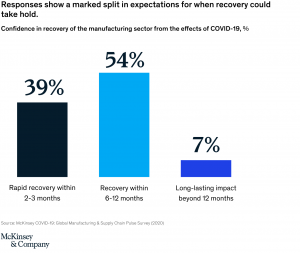
Even big companies that created business contingency plans did not consider the prolonged quarantine periods, travel restrictions, and extended lockdowns.
The outbreak has had a widespread impact on the manufacturing sector, thereby raising some issues.
We have come up with possible solutions for some of the issues that manufacturing companies are facing. Continue reading to find out more.
Workforce issues
The cost structure and capacity of your workforce may decrease with prolonged lockdown and a decline in economic activity. Airlines are facing travel restrictions and a reluctance from travelers who are afraid of contracting the virus.
Also, some company workers could be infected, leading to the outsourcing of some corporate functions. This could drastically reduce operating costs and use up the maintenance capital.
Possible solution
- Get the necessary data of all your employees and track their movements during this pandemic. While at the facility, use the smartspace tracing device to track them.
- Make sure your employees are safe at all times. They should also be taught how best to protect themselves. Enforce sanitation rules and encourage working remotely where possible. Cancel all non-essential travel as well.
- Outsource tasks that will help trim your operating costs.
- Assess strategies to retain your workforce and develop workable risk mitigation programs for on-site workers. Ensure that your front-line workers are well informed about safety practices to reduce the spread of the disease.
Crisis management issues
Manufacturers are under a lot of pressure as the pandemic persists. Some of them are experiencing hardship as they can no longer meet their debt obligations. Eventually, some manufacturers may have to declare bankruptcy.
The nature of the industry requires on-site workers, who have to adhere to the social distancing guidelines, especially those working in worker-dense areas. These are areas where employees often work in close proximity, such as warehouses, logistics, and manufacturing plants, among others.
Manufacturers should also prepare for major disruptions in global supply chains. This will drive reduced demand for production materials and their components, which will be a major challenge for supply chain partners. They may find it difficult to fulfill orders, or they may experience delays resulting from the crisis.
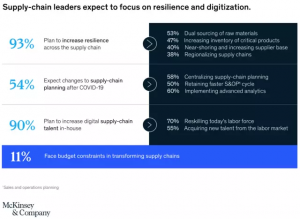
Since no one knows how long this pandemic will last or when the different countries will be able to contain it, it is only natural that industrial manufacturers brace for a long trying period. They may have to lay off some workers temporarily or permanently.
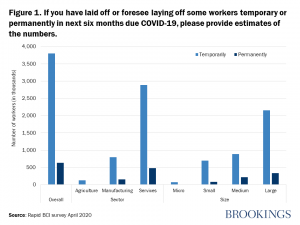
Possible solution
- You may want to assess your M&A prospects or divest assets that are either underperforming or non-core to get some money.
- Spot marginal investments and discretionary items that you can cut by reviewing your capital and corporate cost budgets.
- Work hand-in-hand with the government at municipal, state, and federal levels to coordinate plans for the safety of your workers and customers. Ensure that your mission-critical production processes are still running.
- Refinance debts.
- Assess how loans, cash flow reserves, profitability, and revolving credit can support your ongoing operations on a low revenue.
Financial disclosure issues
Another issue caused by this pandemic in the manufacturing sector is disruptions that could lead to several financial disclosure implications. Stakeholders are breathing down the neck of manufacturers, asking them for transparency, disclosures about risks, vulnerabilities, and impacts – both actual and anticipated.
Possible solution
- Your disclosure about risks should show how recent developments could impact your business while including estimates that are inherent in financial reporting. These estimates could be impairments, debt covenants, inventory obsolescence, and the collectibility of receivables.
- You could also broaden the disclosures beyond what is normally required in financial statements. Consider disclosing management’s analysis of both the current and future impact of credit and liquidity on the business.
- Be more proactive when communicating with your lenders and stakeholders to avoid surprises, enable possible rescheduling of debt, and find alternative financing sources.
- Consider the direct and second-order effects of the business.
10 Ways Manufacturers Can Ensure Social Distancing in the Workplace
Are you on the verge of ceasing your business operations until the pandemic is finally over?
Unlike most economic sectors that could halt their operations during the pandemic, manufacturing industries, especially those that process essential goods, could not be shut down.
Since working remotely is not an option for manufacturers, it is only natural that they turn to other methods to reduce the exposure of their workers to the barest minimum.
Hence the need for a reliable social distancing guideline to ensure the safety of workers in the facility.
Here are 10 guidelines that you should follow to keep your employees safe:
- Provide PPEs and install physical barriers
Providing your workers with adequate personal protective equipment (PPE) like face shields, reusable face masks, and gloves is perhaps the most effective way to minimize the spread of the coronavirus within your facility.
Because the virus spreads through small droplets from the mouth or nose, it is highly advised that workers wear the right gear that will protect them from touching objects or surfaces that are probably contaminated by the virus.
In addition to PPEs, it is highly recommended that you install physical barriers like acrylic screens and partitions, which will allow your employees to always maintain a distance of at least six feet from their coworkers.
Also, provide anti-fog wipes and safety glasses to prevent workers from touching their eyes and faces.
- Implement work-from-home policies whenever possible
Do you have aspects of your business that can be done from home?
The work-from-home policy may not work for all factory workers, but it can go a long way in protecting those working in the virtual part of manufacturing to help mitigate the spread of the virus.
As a point of duty, you should update your workers on the latest safety guidelines and move things online as much as possible.
Sick workers or those exposed to infected people should stay at home until they have a clean bill of health.
- Emphasize the need for proper hygiene
It is now general knowledge that a person can get infected with the virus by touching contaminated objects or surfaces and then touching their faces. To ensure that the virus does not spread in this way, you must keep your facilities clean at all times.
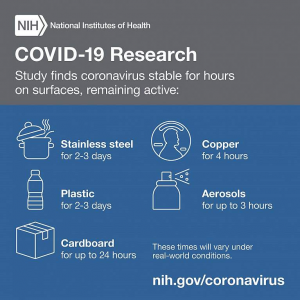
Ramp up your cleaning efforts and wipe down surfaces often. Also, promote handwashing by putting up signs.
- Stagger shifts and reassign workers
It is important to reduce the number of people present in your facility at the same time by staggering shifts. Shifts often come in handy when there is a lot of manufacturing work to be done. It also helps to alleviate some of the stress from your workers, making them more productive.
Where the nature of the tasks permit, reassign some of your workers so they can work in isolation.
- Identify and exclude high-risk employees from the workplace
Can you identify high-risk employees?
If you notice an employee with symptoms of the virus, like difficulty breathing, coughing, a fever, sore throat, or a runny nose, ask them to go and get tested. As a matter of fact, sick employees are encouraged to stay at home as recommended by the Center for Disease Control and Prevention.
After sending sick employees home, conduct contact tracing to identify high-risk employees in your factory. Anyone who spent extended periods of time with any infected person should be asked to self-isolate at home.
You shouldencourage employees who have recently taken international flights or cruises to remain at home for about 2 weeks. Go a step further by asking individuals who live with infected persons to stay at home.
But how can you identify high-risk employees?
Here are 2 ways to identify high-risk individuals:
- Self-identification
You could just ask your employees for self-identification by interviewing them and regularly giving them surveys to complete.
This method has various drawbacks since some employees may not want to be honest when answering questions that will cause them not to work for an extended period of time.
You may have to relax the barriers to full disclosure so that employees will be more honest with you. Try these suggestions:
- Increase the paid leave benefits of your employees;
- Remove time-off penalties; or
- Allow your employees to borrow from their future leave entitlements; or
If you don’t trust self-identification, there’s another option –
- Temperature checks
Temperature screening is an excellent way to identify high-risk workers before they enter the facility. Persons with temperatures above 100.4 degrees Fahrenheit should not be allowed entry.
But first, ensure that those in charge of handling the devices are well trained and protected. Furthermore, measures should be implemented to safeguard the privacy of tested employees.
- Punching in and out
Time clocks are important in manufacturing facilities and other business premises since they encourage punctuality and discipline.
However, you may want to consider foregoing physical punching-in or find an alternative procedure like using a checklist. Assign a supervisor to check the names as workers come in.
Find and eliminate the high touch areas during the punching-in process. Instead of people opening entrance doors, consider keeping them propped open during work hours.
- Shipping and Receiving
Every manufacturing company needs raw materials to work with. This can present a significant problem during this pandemic.
How can you fix this?
Arrange for your deliveries to be contactless wherever possible. Stagger deliveries to minimize contact during delivery.
- Workers who can work from home should do that
Reduce the number of workers at your facility by instructing workers who can work remotely to work from home.
Provide the required electronics that they will need to work effectively from home.
Try teleconference meetings to reduce large gatherings.
- Protect the workstation
Where possible, adjust your work areas to keep workers at a distance of no less than 6 feet from each other. This may require that you add extra shifts or spread the shifts.
As much as possible, do not allow workers to share tools. If they must share tools, these must be disinfected before and after use.
Also, work on minimizing the number of attendees at meetings. Endeavor to hold virtual meetings instead of huddle meetings.
- Use wearable monitoring devices
Manufacturing plants differ from one another. While some facilities allow the installation of physical barriers, some may not. For those that make it impossible to install physical barriers, your best option will be to invest in social distancing tech like smartspace.
This amazing device sets off an alarm if wearers come within 6 feet of each other and also provides real-time data on who came into contact with who and for how long.
smartspace has amazing features that make it the best choice for enforcing social distancing among workers, while storing data on the app for contact tracing purposes.
What’s the Takeaway?
Manufacturing does not support remote work and this requires proactive action.
Although there is no standard guideline for operating a manufacturing company during a pandemic, the ideas compiled in this article will go a long way in keeping you and your employees safe, confident, happy, healthy, and productive.
Seguro LLC has come up with a way to get you back in business with its smartspace technology. Take advantage of this social distancing device to reopen for production and create a new normal in your business environment.

Sorry, the comment form is closed at this time.